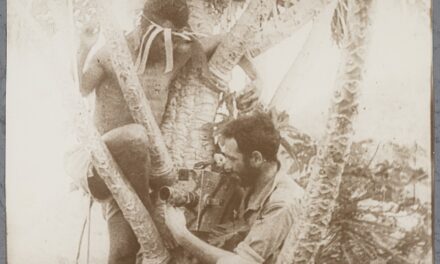Estimated reading time: 6 minutes
With the release of the first-world-war film Gallipoli in 1981, director Peter Weir could finally shrug off the nickname he had laboured under since making his first films: “Peter Weird”.
Idiosyncratic work like Homesdale (1971), The Cars That Ate Paris (1974), and the deeply atmospheric, metaphysical dramas Picnic at Hanging Rock (1975) and The Last Wave (1977) had earned Weir a reputation for making quirky, mysterious, genre-bending films. His gift for creating mood and atmosphere at times overwhelmed his concern with linear narrative.
By Nick Prescott, Flinders University.
This tendency seemed to change quite consciously with Gallipoli. Weir has said the inspiration for the story came from a trip to Anzac Cove in 1976. Flying back to Australia from London, he took a detour to Turkey. At the Gallipoli Peninsula, walking in still-extant trenches, Weir found not just shrapnel and bullet-casings, but also the personal effects of young soldiers. These tiny mementos poking out of the earth were probably the final objects held by some young men before they died.
Read more: In their own words: letters from ANZACs during the Gallipoli evacuation
The experience was profound. From this emotional rite of passage came the seeds of a work Weir has described as his “graduation film”.
The sensitivity and respect with which he approached the material in Gallipoli was striking. Playwright David Williamson was brought on to craft a screenplay from a story Weir had penned himself. For the two central characters, Weir chose Mark Lee as Archie, and Mel Gibson — fresh from the success of Mad Max — as Frank.
Blood red, burnished orange
Originally envisioned as a detailed, epic narrative of war, Gallipoli was gradually narrowed in scope to focus on the experiences of the two friends, competitive runners who enlist in the army for slightly different reasons. Archie is the idealist — joining to do his duty. Frank is more cautious and self-centred, eventually talked into enlisting by his mates.
Archie and Frank bond quickly and suddenly find themselves transported to Egypt, on their way to Turkey and their respective appointments with destiny.
The ANZAC experiences in the first world war arguably cemented post-colonial Australian ideals of mateship, bravery and love for country. Yet while many of the character attributes and events the film celebrates are still very much part of the Australian consciousness, in Weir’s film, these attributes are genuinely — one might even say lovingly — treated in mythic fashion.
From Gallipoli’s opening frames, where blood-red credits play out on a black background as Tomaso Albinoni’s Adagio in G Minor plays, we immediately see a sober and attentive approach to the storytelling.
The opening scene finds Archie training to run on the farm. Courtesy of cinematographer Russell Boyd, the outback location is all burnished oranges, browns and reds.
There is an immaculate attentiveness to costume, set dressing and editing.
Both Mark Lee and elder statesman Bill Kerr (as his Uncle Jack) deliver beautiful — and beautifully directed — performances, perfectly establishing the central themes of love, family and belonging. It is clear from the opening minutes this is a story being told with a deft hand.
A war film about loss
Gallipoli retains its focus on the emotional and psychological effects of war throughout the film; from the families left behind to the deep friendships torn asunder by death and violence, every character and situation in the film helps construct Weir’s portrait of innocence lost. (Gallipoli has far more in common with Terrence Malick’s The Thin Red Line than with Steven Spielberg’s Saving Private Ryan.)
Watching Gallipoli 40 years after its release is a fascinating experience. The film has lost none of its power, and the elegance of its construction has become even more pronounced after multiple viewings.
Having studied Williamson’s screenplay for the film (based on a story outline by Weir and marked as a third draft, dated 1979), I was struck by enormous differences — in both plot and overall tone — between the 1979 draft and the final cut of the film.
Williamson’s draft spends much time establishing the geopolitical context for the conflict, much of the exposition of which is absent from the film.
Another significant excision from the screenplay is a romantic subplot between Archie and a young woman he plans to marry when he returns from the war. Weir would ultimately choose to make the central relationship the one between Archie and Frank, thus reinforcing the crucial themes of mateship and innocence destroyed by war.
Coming of age
An enormously important addition to the film is absent from the screenplay: the motif of running, and Archie’s extraordinary gift for running “as fast as a leopard”.
Weir begins and ends the story with scenes of Archie running in response to a whistle-blow. The context changes tragically: from practising for a race on the farm in the idyllic opening scene to running desperately across no-man’s land in the closing one.
Here, Weir’s myth-making hits us between the eyes with stark, tragic inevitability. Archie’s gift for running, which fills him with joy, has ultimately led him to a battlefield across which he has to run for his life, alone and unprotected, a hero embracing his fate.
After Gallipoli, which won eight Australian Film Institute (AFI) awards and was nominated for Best Foreign Film at the 1982 Golden Globe Awards, Weir would leave behind much of the overt quirk and mystery of his early work, and move to political dramas, thrillers and historical pieces — The Year of Living Dangerously (1982), Witness (1985), Dead Poets Society (1989), The Truman Show (1998), Master and Commander: The Far Side of the World (2003).
While retaining a love of beautifully-rendered atmosphere, Weir would go on to demonstrate a maturity of storytelling that has made him one of our greatest filmmakers. Perhaps Gallipoli represents its director’s coming-of-age as powerfully as it does its characters’.
This article was originally published in The Conversation.
Articles you may also like

Battle of 42nd Street – Anzacs Proving Germany Could be Beaten
Morale can make all the difference on the battlefield. On the 27th May 1941, with the Greek island of Crete close to loss and the Allies in full retreat, a 12 minute moment of madness by Australian and New Zealand troops proved that aggression and bravery could overcome Germany’s elite troops. By Richard Shrubb. Background […]










